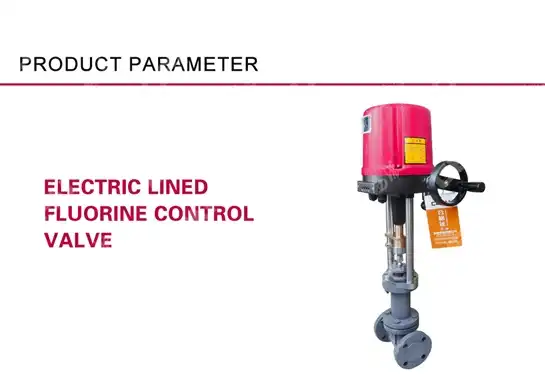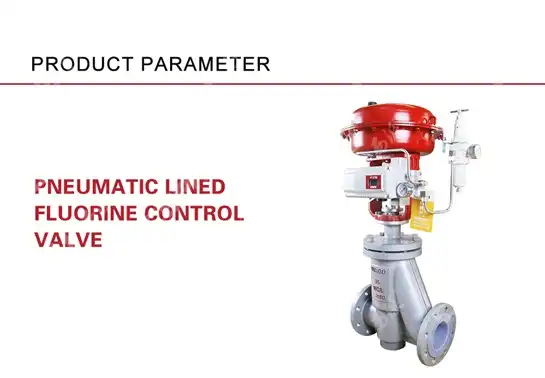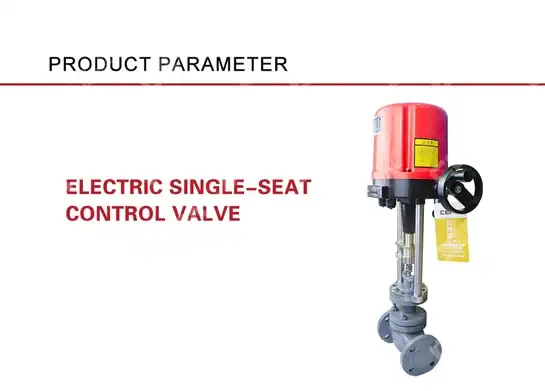Your Complete Buyer's Guide to Electric Control Valves
Are you struggling with inconsistent flow control in your industrial processes, experiencing frequent maintenance downtime, or searching for automated solutions that can deliver precise control while reducing operational costs? Your search ends here. This comprehensive buyer's guide to Electric Control Valves will provide you with essential knowledge to make informed purchasing decisions, understand technical specifications, evaluate quality standards, and identify the right manufacturer for your specific industrial applications. Whether you're managing petrochemical operations, power generation systems, or water treatment facilities, this guide addresses every critical aspect of Electric Control Valve selection and procurement.
Understanding Electric Control Valve Fundamentals
-
Core Components and Working Principles
Electric Control Valves represent sophisticated automation devices engineered to regulate fluid flow through electrical actuation systems. These precision instruments combine mechanical valve bodies with advanced electric actuators to achieve automated flow control in demanding industrial environments. The fundamental operating principle involves converting electrical signals into mechanical motion, which then adjusts the valve's opening position to control flow rates, pressure drops, and system parameters with exceptional accuracy. The valve body serves as the primary flow control element, manufactured from high-grade materials such as WCB, WC6, WC9, LCB, LC2, LC3, CF8, and CF8M to ensure compatibility with various process media and operating conditions. Modern Electric Control Valve designs incorporate pressure-balanced valve cores that provide stable performance across fluctuating system pressures, while advanced sealing technologies including PTFE V-shaped packing, PTFE asbestos, and flexible graphite ensure leak-tight operation throughout extended service cycles.
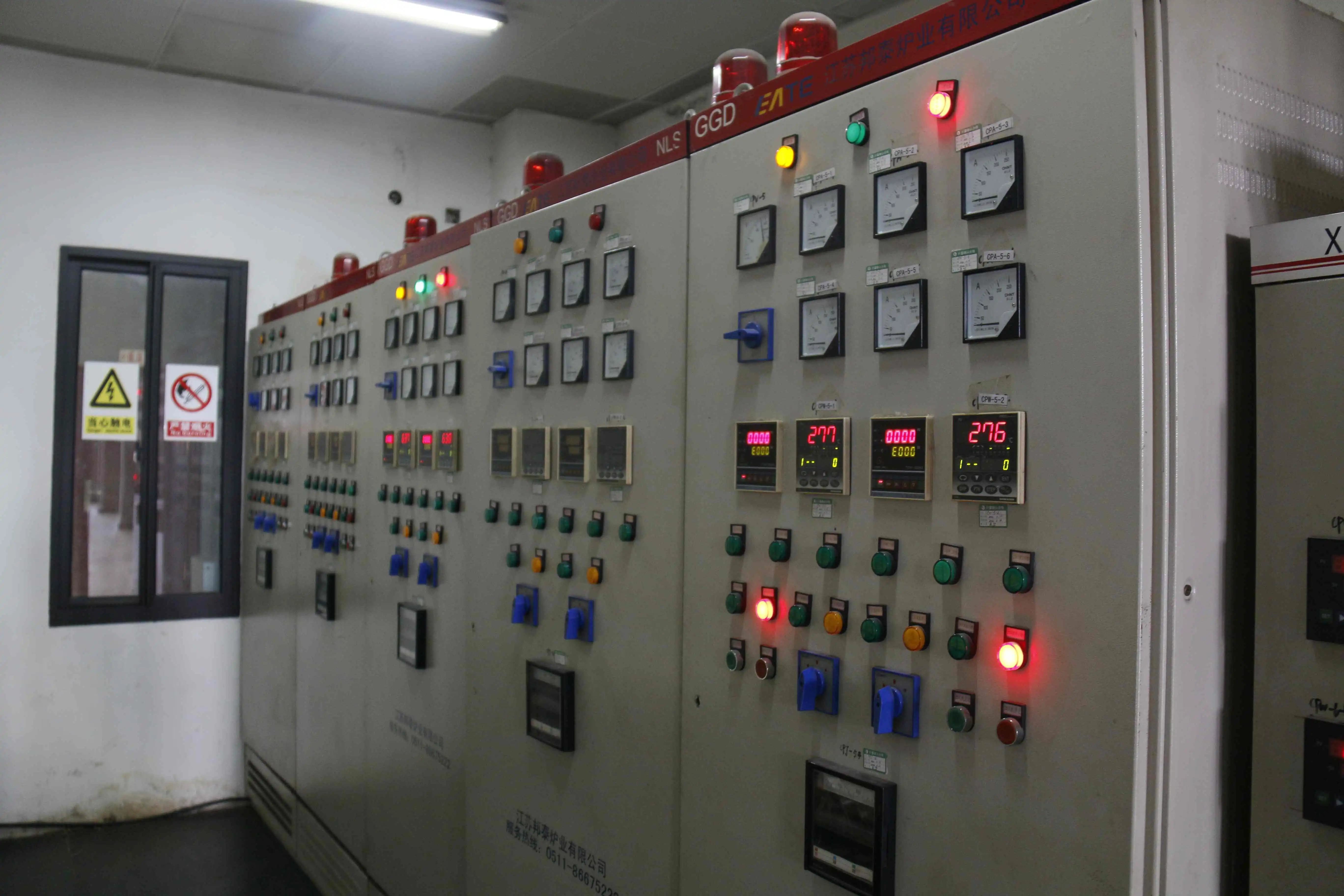
-
Electric Actuator Technology and Control Systems
Contemporary electric actuators feature sophisticated control architectures that respond to standard 4-20mADC signals, enabling seamless integration with distributed control systems and SCADA platforms. These actuators operate across voltage ranges of 220V and 380V, maintaining reliable performance in ambient temperatures from -30°C to +70°C. Advanced models provide bidirectional signal feedback, allowing real-time position monitoring and closed-loop control optimization for enhanced process stability and efficiency. The precision control capabilities of modern Electric Control Valves extend to multiple adjustment characteristics including equal percentage, linear, and quick opening profiles. This versatility enables engineers to optimize valve performance for specific process requirements, whether managing viscous liquids, high-pressure gases, or corrosive chemical compounds. The integration of intelligent electronic components with sophisticated measurement devices enables continuous valve operation with minimal human intervention, significantly reducing operational costs while improving process consistency.
Electric Control Valve Selection Criteria
-
Technical Specifications and Performance Parameters
Selecting the appropriate Electric Control Valve requires comprehensive evaluation of technical specifications aligned with your operational requirements. Critical parameters include nominal diameter ranges from DN15 to DN400mm, pressure ratings spanning PN16, PN40, PN64, and ANSI standards including 150, 300, and 600 class ratings. These specifications directly impact the valve's ability to handle your process conditions while maintaining long-term reliability and performance stability. Temperature compatibility represents another crucial selection factor, with standard configurations supporting operating ranges from -17°C to +230°C. For extreme temperature applications, specialized materials and design modifications may be required to ensure optimal performance. The valve's flow coefficient (Cv) values must align with your system's flow requirements, while considering factors such as pressure drop limitations, cavitation potential, and noise generation characteristics that could impact overall system performance.
-
Material Selection and Compatibility Considerations
Material selection significantly influences Electric Control Valve performance, longevity, and total cost of ownership. Internal components manufactured from 304, 316, and 316L stainless steel grades provide excellent corrosion resistance for most industrial applications. For highly corrosive environments, specialized alloys and coating technologies may be necessary to ensure extended service life and maintain process integrity. Bellows materials including 304L, 316L, and Hastelloy C alloys offer superior sealing performance while accommodating thermal expansion and contraction cycles. The selection of appropriate packing materials, whether PTFE-based compounds or flexible graphite systems, directly impacts the valve's sealing performance and maintenance requirements. These material choices must consider not only the primary process fluid but also potential contamination, cleaning procedures, and compatibility with downstream equipment components.
Installation and Maintenance Best Practices
-
Professional Installation Requirements
Proper Electric Control Valve installation forms the foundation for reliable long-term operation and optimal performance. Installation procedures must ensure robust connections between valve flanges and pipeline systems to prevent leakage and maintain structural integrity under varying operating conditions. Pre-installation inspections should verify component condition, dimensional accuracy, and absence of damage that could compromise valve performance or safety. The installation process requires careful attention to actuator orientation, electrical connections, and signal wiring to ensure proper operation and control system integration. Valve positioning within the pipeline system must consider accessibility for maintenance activities, actuator protection from environmental conditions, and compliance with safety regulations. Proper support structures and thermal expansion accommodation prevent mechanical stress that could lead to premature failure or performance degradation.
-
Preventive Maintenance and Quality Assurance
Implementing comprehensive preventive maintenance programs ensures Electric Control Valve reliability while minimizing unplanned downtime and associated costs. Regular inspection schedules should include sealing performance verification, actuator functionality testing, and control signal accuracy validation. These activities identify potential issues before they develop into costly failures, enabling proactive maintenance scheduling that aligns with production requirements. Quality assurance protocols must encompass material analysis, dimensional inspection, process monitoring, and final testing procedures that comply with relevant international standards. Each Electric Control Valve should undergo rigorous testing including pressure testing, leakage assessment, and performance validation before shipment. Comprehensive documentation including test certificates, material traceability records, and performance data provides essential information for operational decision-making and regulatory compliance requirements.
Industry Applications and Performance Optimization
-
Petrochemical and Oil & Gas Applications
Electric Control Valves play critical roles in petrochemical and oil & gas operations, where precise flow control directly impacts production efficiency, safety performance, and environmental compliance. These applications demand valves capable of handling aggressive process media, extreme operating conditions, and stringent safety requirements. Modern Electric Control Valve designs incorporate advanced sealing technologies and materials specifically engineered for hydrocarbon service applications. The upstream oil and gas sector relies heavily on Electric Control Valves for wellhead operations, pipeline management, and production optimization. These valves must demonstrate exceptional reliability under challenging conditions including high pressures, temperature fluctuations, and corrosive environments. Downstream refining operations require precise flow control for distillation processes, catalytic reactions, and product blending applications where accuracy directly impacts product quality and operational efficiency.
-
Power Generation and Water Treatment Systems
Power generation facilities utilize Electric Control Valves throughout their operations, from boiler feedwater systems to steam turbine applications and cooling water circuits. These applications require valves capable of handling high-temperature steam, maintaining precise flow control under varying load conditions, and providing rapid response to system transients. The reliability of Electric Control Valves in power generation directly impacts plant availability and operational profitability. Water treatment systems depend on Electric Control Valves for chemical dosing, filtration processes, and distribution network management. These applications emphasize long-term reliability, minimal maintenance requirements, and precise control capabilities that ensure water quality compliance and operational efficiency. Advanced Electric Control Valve designs incorporate corrosion-resistant materials and sealing systems specifically engineered for water and wastewater applications, providing extended service life while maintaining performance standards.
Quality Standards and Certification Requirements

-
International Standards Compliance
Electric Control Valve manufacturing must comply with comprehensive international standards that ensure product quality, safety performance, and operational reliability. API standards including API Q1, API 6A, API 6D, API 16C, and API 602 establish rigorous requirements for design, manufacturing, testing, and quality assurance procedures. These standards provide customers with confidence in product performance while ensuring compatibility with industry practices and regulatory requirements. ISO certification programs including ISO 9001 quality management systems, ISO 14001 environmental management, and ISO 45001 occupational health and safety demonstrate manufacturer commitment to excellence across all organizational aspects. Additional certifications such as CE marking, SIL (Safety Integrity Level) ratings for critical safety applications, and CNAS laboratory accreditation provide further assurance of product quality and manufacturing capability.
-
Testing and Validation Procedures
Comprehensive testing protocols ensure Electric Control Valve performance meets specified requirements across all operating conditions. These procedures include material analysis verification, dimensional inspection, hydrostatic pressure testing, and leak-tight performance validation. Advanced testing facilities incorporate automated systems that provide consistent, accurate results while maintaining detailed documentation for quality traceability and regulatory compliance purposes. Performance testing encompasses flow coefficient verification, control characteristic validation, and endurance testing under simulated operating conditions. These comprehensive evaluations ensure Electric Control Valves meet or exceed specified performance criteria while identifying potential issues before product shipment. Final inspection procedures include visual examination, functional testing, and documentation review to ensure complete compliance with customer requirements and applicable standards.
Conclusion
Electric Control Valve selection requires careful consideration of technical specifications, application requirements, and quality standards to ensure optimal performance and long-term reliability. This comprehensive guide has addressed fundamental operating principles, selection criteria, installation requirements, maintenance practices, and quality assurance procedures essential for successful Electric Control Valve procurement and operation. By understanding these critical factors, buyers can make informed decisions that optimize system performance while minimizing total cost of ownership.
Cooperate with CEPAI Group Co., LTD.
CEPAI Group Co., LTD. stands as a leading technology multinational company specializing in high-end Electric Control Valve manufacturing and advanced fluid control solutions. Established in 2009 with 200 million yuan registered capital and occupying 56,000 square meters of modern manufacturing facilities in Jiangsu Province, CEPAI has earned recognition as a national high-tech enterprise and specialized new small giant enterprise. Our comprehensive qualifications include API Q1, API 6A, API 6D, API 16C, API 602, ISO 9001, ISO 14001, ISO 45001, CE certification, and multiple SIL certifications for safety-critical applications.
As a trusted China Electric Control Valve factory, China Electric Control Valve supplier, China Electric Control Valve manufacturer, and China Electric Control Valve wholesale provider, we offer Electric Control Valve for sale with competitive Electric Control Valve price points while maintaining High Quality Electric Control Valve standards. Our 156 million yuan investment in intelligent manufacturing has created the Asia Pacific region's longest high-precision flexible production line, enabling us to deliver exceptional quality products with shortened lead times. Contact us at cepai@cepai.com to discover how our advanced Electric Control Valve solutions can optimize your industrial processes and enhance operational efficiency.
FAQ
Q: What are the key advantages of electric control valves over pneumatic alternatives?
A: Electric control valves offer precise positioning accuracy, lower maintenance requirements, eliminate compressed air needs, provide excellent repeatability, and integrate seamlessly with digital control systems for enhanced process optimization.
Q: How do I determine the correct valve size for my application?
A: Valve sizing requires calculating flow coefficient (Cv) based on flow rate, pressure drop, fluid properties, and operating conditions. Professional engineering support ensures optimal sizing for your specific application requirements and system performance objectives.
Q: What maintenance procedures are essential for electric control valve longevity?
A: Regular maintenance includes periodic actuator calibration, seal inspection and replacement, electrical connection verification, control signal testing, and comprehensive performance validation according to manufacturer recommendations and industry best practices.
Q: Which industries benefit most from electric control valve automation?
A: Petrochemical, oil and gas, power generation, water treatment, pharmaceutical, food processing, and chemical manufacturing industries achieve significant benefits from electric control valve automation including improved precision, reduced labor costs, and enhanced safety performance.
References
1. "Control Valve Handbook" by Emerson Process Management - A comprehensive technical reference covering control valve fundamentals, selection criteria, and application guidelines for industrial process control systems.
2. "Valve Selection and Service Guide" by Crane Technical Paper No. 410 - Industry-standard reference providing detailed information on valve sizing, selection, and service considerations for various industrial applications.
3. "ISA-75 Standards for Control Valves" by International Society of Automation - Official standards documentation establishing requirements for control valve flow capacity, performance testing, and terminology definitions.
4. "Process Control: Modeling, Design, and Simulation" by B. Wayne Bequette - Academic textbook covering advanced control theory and practical applications including electric control valve systems and process optimization strategies.
_1745994790767.webp)
Get professional pre-sales technical consultation and valve selection services, customized solution services.
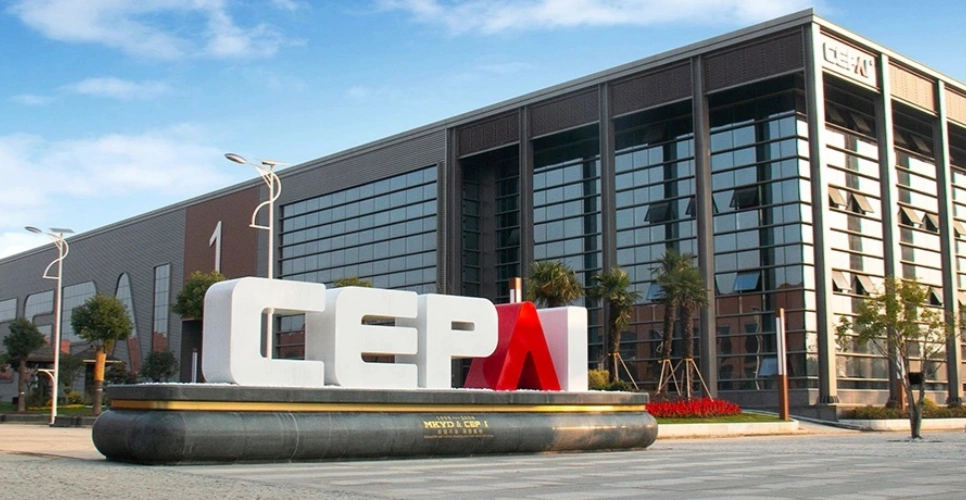
About CEPAI
